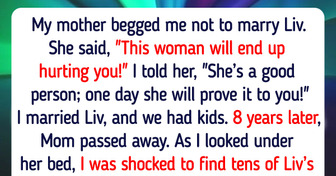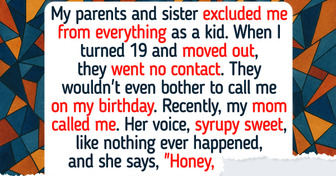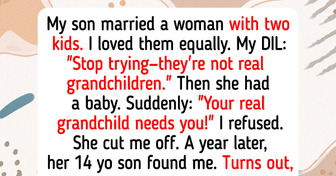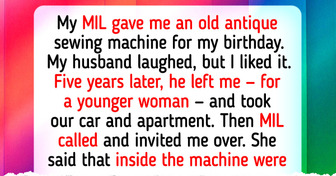Brad Pitt’s Chin Transformation Leaves Fans Shocked, “He Looks Really Healthy Now”


When waking up in the morning, most people look in the mirror for various reasons, such as skin care and daily affirmation. We also sometimes check if there are changes on our face or if there’s acne. Some might as well notice skin bumps while tracing the skin, and it may not be acne, but something else.
CONTENT IS PROVIDED FOR INFORMATIONAL PURPOSES ONLY AND IS NOT INTENDED AS A SUBSTITUTE OF MEDICAL ADVICE.
SEEK GUIDANCE OF YOUR DOCTOR REGARDING YOUR HEALTH AND MEDICAL CONDITIONS.
Your face goes through a lot every day, which is why it’s no surprise that a pimple can show up at any time. But not in all cases is the skin bump related to acne.
Bumps come in different shapes, colors, and sizes, and are usually not dangerous. But sometimes, they may be linked to health problems like skin cancer or blood disorders. You should see a doctor if a bump causes pain or changes in any way. This article may help you identify these facial skin bumps that are not acne.
Milia can be seen as small, smooth white bumps that won’t go away. These tiny cysts often appear in clusters, usually on the cheeks, nose, or around the eyes.
Milia often appear after skin damage or from using heavy products that clog pores. Other causes can include sun exposure or certain genetic conditions. To prevent it, avoid rubbing your skin too hard and choose lightweight skincare. If milia don’t go away, seek professional help.
Sebaceous hyperplasia is caused by enlarged oil glands. When they grow bigger, they form soft or hard bumps that are white, yellow, or skin-colored. It can be caused by hormone changes.
To identify it, these bumps usually have a small dent in the center. Sebaceous hyperplasia can look like basal cell skin cancer, so it’s best to have a doctor check it to be sure.
It’s harmless and doesn’t need treatment unless it bothers you. If it does, see a doctor to help remove it. Using skincare with niacinamide, retinol, or salicylic acid might also help.
Syringomas are harmless growths from the sweat ducts. They usually appear in small clusters on the eyelids but can also show up on the face, armpits, belly button, chest, or vulva. These bumps are firm, round, and skin-colored or slightly yellow and are about one to three millimeters.
Several factors can lead to this overgrowth, such as stress, physical exertion, genetic mutations, or it can sometimes be linked to underlying health conditions. They can look like other conditions, so it’s best to see a doctor for a proper check-up and treatment.
Molluscum contagiosum are harmless, wart-like bumps that are usually pink, brown, or skin-colored with a small dimple in the center. They can sometimes cause itching or make the surrounding skin red and irritated.
These bumps are caused by a virus and are contagious. They’re most common in kids, but adults can get them too. Transmission usually happens through direct skin contact or by sharing personal items such as clothing, towels, or bedding.
On the bright side, molluscum usually clears up on its own, but it can take months or even years. If you want them gone sooner, a dermatologist can help.
Keratosis pilaris is a common skin condition that causes tiny, rough bumps. You’ll usually see it on the upper arms or thighs, but it can also appear on the cheeks.
No one knows exactly what causes it, but it tends to run in families, and if you have eczema, it can be a factor. It doesn’t need treatment and often gets better with age. To smooth it out, using moisturizing and exfoliating creams can help.
Xanthelasma causes white or yellow patches or bumps around the eyes, usually on the eyelids, which are flat and uneven.
They’re made of cholesterol under the skin, so people with xanthelasma often have high cholesterol. It isn’t harmful, but if it’s bothering you, it can be removed. If you spot these bumps, it’s a good idea to check in with your doctor. They could be a sign of high cholesterol or other health issues.
Sebaceous cysts are harmless, slow-growing bumps that form under the skin, often appearing on the scalp, face, ears, back, chest, or groin. They’re usually filled with keratin, oil, and skin cells.
Unlike other bumps, where it feel fixed to the skin, sebaceous cysts can move slightly when pressed. It may stay the same size, grow slowly, or sometimes become inflamed or burst, raising the risk of infection. They often don’t need treatment and may go away on their own, but they often return. If a cyst is painful, swollen, or infected, it’s best to see a doctor.
With this list, it may help you identify an unfamiliar skin bump you might have. Note that if you get a red bump on your face, it helps to know if it’s acne or something else. Acne can show up in several different forms, such as pimples, blackheads, whiteheads, cysts, and nodules. They can be painful to the touch, often feeling sore or tender..
Other skin bumps often don’t hurt and don’t show up with more spots nearby.
If you have a skin bump that isn’t going away, and you’re unsure what it is, it’s a good idea to see a doctor or dermatologist. You should get checked if the bump is becoming painful, is growing or changing color, is not getting any better, or appears quickly and spreads.
Most white bumps on the face are harmless, like clogged pores or milia, and often don’t need treatment. But some could be more serious. It’s always best to see a professional for the right diagnosis and care.
Some symptoms are subtle, and it can be signaling that your heart is in trouble. Check this link to read more.











